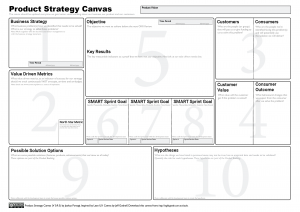Are you looking for a way to generate more revenue for your business? If so, you’ve likely examined your existing marketing strategy and fine-tuned your most popular products and services.
But here’s the real question; have you considered adding additional revenue streams to your business model?
Companies around the globe are looking to heighten brand awareness, build their customer base, and secure more sales. When you give consumers more options to engage with your brand and become a customer, there’s a good chance you’ll see an overall boost in conversions across all platforms.
We want to help you boost profits for your small business. So today, we will explore four ways to re-engage existing users, attract new customers, and overall increase your sales by creating new revenue opportunities.
Let’s dive in!
Branch Out Your Product Catalog
First, let’s talk about growing your existing product catalog. You’ve likely spent a ton of time analyzing your target audience and improving marketing for your current customers. You may have learned about some features or products that are missing from your lineup throughout this journey.
You can use this information to expand your product offerings to support the needs of people in your industry. For example, if you have a website that focuses on vegetable gardening supplies and tips, you’ve probably encountered quite a few people asking for advice and products for growing flowers.
Instead of letting that revenue stream go to waste and leaving potential customers empty-handed, you can start working on products specifically designed for people interested in flower gardening.
Not only will you get more sales, but it can open plenty of new content marketing opportunities. Did you know that 70% of consumers prefer getting to know brands through their content? If you can provide high-quality content on your new product categories, you could see a dramatic spike in traffic before the sales.
The more content you create to match your new products, the more search visibility and awareness you’ll have in the community. When you consider that 60% of people purchase a product after reading a relevant blog post, it’s easy to see why this one strategy can open up countless new revenue streams.
Add a Subscription Model
Subscription models are quickly growing in popularity for eCommerce storefronts and SaaS brands. It’s estimated that by 2022, 52% of all software will come from subscriptions, and we anticipate that this trend will continue to grow across other industries.
The best part about using a subscription model is you can pick the terms that work for your business. Let’s revisit the gardening website we mentioned earlier. If the site owner wanted to create an additional revenue stream, they could showcase bundle packs that feature potting soil, tools, and books to help with seasonal growing.
SaaS companies create plans for their service where users can buy annual subscriptions and bundle other software to save money. These plans and combinations can vary, but they are wildly successful across all industries.
Many consumers are happy to use subscription models because they can pay for additional features and an extended service period.
Think carefully about the products or services you offer online and determine how you can group them for a value-packed offer. You may want to bundle together popular products or include a special content bonus for users that sign up for an annual software subscription. The choice is yours, but you can boost profits if you add a subscription model to your marketing strategy.
Consider Affiliate Marketing
Affiliate marketing is another handy revenue stream for online stores. Essentially, businesses partner up with other companies and promote their products with an exclusive code. When a visitor clicks on the link and completes their order, the affiliate gets a commission for the sale.
Both large and small businesses use affiliate marketing to boost profits. In most cases, you’ll want to partner with brands that offer products that resonate with your target audience. For instance, a business that sells guitar amps may choose to offer shoppers studio headphones from another company after completing their order.
If the user clicks the affiliate link and purchases the headphones, the company will see two revenue streams from that one person. The first from their order with your company and the second chunk of revenue will appear when you get paid commission from the partner company.
You should also research partner companies carefully before promoting their products. The last thing you want is to promote a product that’s not as good as you told your audience. We recommend ordering affiliate products and trying them yourself before offering them to your customers.
Create a Social Media Storefront
It’s impossible to deny the popularity of social media. Almost 4 billion people are registered to websites like Facebook, Instagram, and Pinterest. If you think that’s impressive, consider this; 59% of all people who use social media say they have used the sites for shopping inspiration.
In other words, there are members of your target audience that are ready to go to your website and make a purchase. Luckily, you can reduce cart abandonment and create a brand new revenue stream by creating a storefront on your social media account.
For example, Facebook has a Commerce Manager tool where business owners can create and showcase a custom online store to people browsing the marketplace or your profile page. You can use this tool to add pictures, pricing, and details for frequently-purchased products.
This one small change could result in a massive influx of new sales. Some of your followers might be on the fence about completing their orders on your website. The ability to browse your catalog and buy directly from your social media page could be just the thing to turn subscribers into loyal customers.
Review your sales data and determine which items you would like to put on display. Don’t forget to include popular collections and bundles so users can get the same value they would find on-site through your social account.
Final Thoughts
Don’t be afraid to experiment with different bundles, affiliate brands, and social media storefronts until you find a strategy that works for you. Every online store and industry has a slightly different audience. Take the time to get this part of your marketing strategy right, and you’ll have no problem growing your small business with brand new revenue streams.
Business & Finance Articles on Business 2 Community
(58)







